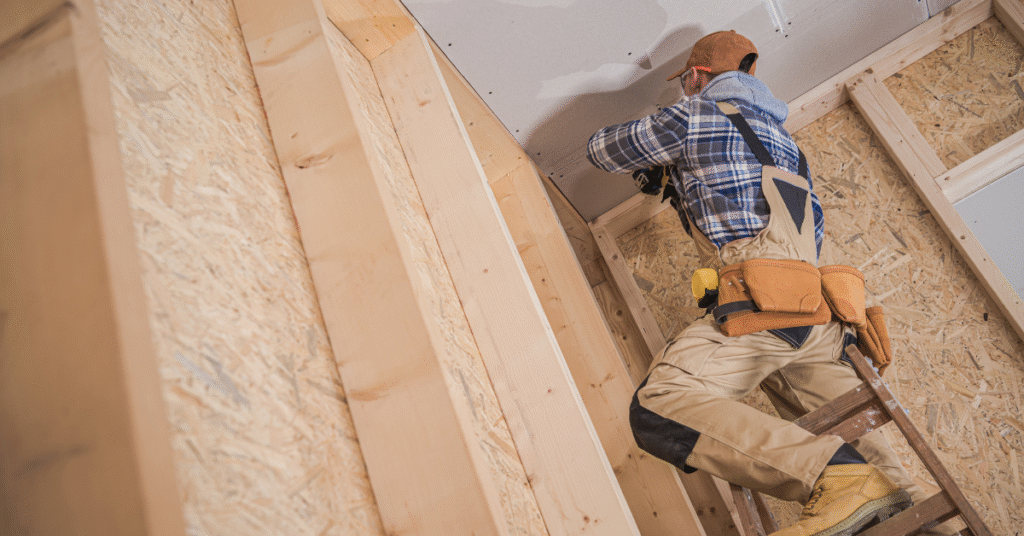
Living in a high desert region presents unique challenges for homeowners. The combination of intense sun, wide temperature fluctuations, dry air, and occasional storms requires a tailored approach to home maintenance. Whether you’re preparing for a blazing summer or a frosty winter, maintaining your home properly will extend its lifespan, increase energy efficiency, and prevent costly repairs.
At Cornerstone Residential, we understand the specific needs of high desert homeowners. Our team compiled a comprehensive guide to seasonal maintenance that ensures your home is prepared for every season.
Spring: Inspect and Prepare for Heat
Spring is the perfect time to transition your home from the cooler months and get ready for the high temperatures ahead.
1. Roof and Gutter Inspection
High desert winters may not bring much snow, but temperature shifts can cause wear and tear. Inspect your roof for cracks, loose tiles, or missing shingles, especially after winter storms. Clear debris from gutters and downspouts to ensure proper drainage. According to the National Roofing Contractors Association, semi-annual inspections help prevent water damage and extend roof life.
2. Check HVAC Systems
Before the peak of summer hits, schedule an HVAC tune-up. Dirty filters or failing components can decrease efficiency and raise your energy bill. The U.S. Department of Energy recommends checking air filters monthly and replacing them every 1–3 months, especially in dusty environments like the desert.
3. Seal Windows and Doors
Inspect caulking and weatherstripping around windows and doors. According to the EPA, sealing air leaks can improve indoor comfort and reduce heating and cooling costs by up to 20%.
Explore our home inspection checklist for a deeper dive into spring-specific tasks.
Summer: Beat the Heat & Prevent Fire Hazards
Summer in the high desert is intense. Temperatures can exceed 100°F, and the dry conditions increase the risk of wildfires.
1. Exterior Paint and Siding Care
UV rays degrade paint and siding. Walk around your home to check for blistering paint, cracked stucco, or warped siding. Refreshing protective coatings can help reflect sunlight and insulate your home more effectively. Learn more from the U.S. Forest Service on how the environment impacts home exteriors.
2. Fire-Safe Landscaping
Maintain a defensible space by clearing brush, weeds, and dead trees at least 30 feet from your home. The National Fire Protection Association (NFPA) emphasizes this practice to reduce wildfire risk.
3. Inspect Your Irrigation System
Check for leaks and adjust watering times to early morning or late evening to minimize evaporation. This is essential in dry climates where water conservation is key. Refer to the EPA WaterSense program for efficient landscaping tips.
Fall: Prep for Cold and Wind
Autumn in high desert climates brings cooler nights and the onset of seasonal winds. Now’s the time to button up your home before winter sets in.
1. Check Insulation
Inspect attic and wall insulation. Poor insulation leads to heat loss, making your HVAC work harder in winter. The U.S. Department of Energy provides guidelines on insulation levels based on climate zones.
2. Clean and Service Chimneys
If your home has a fireplace or wood stove, fall is the best time to have chimneys cleaned and inspected. The Chimney Safety Institute of America (CSIA) stresses that regular maintenance reduces fire risk.
3. Inspect Weatherproofing
Check for drafts near baseboards, electrical outlets, and wall junctions. Use foam sealants or insulation tape where needed.
Visit our project gallery to see real examples of seasonal upgrades we’ve completed for desert homeowners.
Winter: Protect Against Temperature Swings
While snow may be rare, high desert winters still bring freezing nights and occasional storms.
1. Protect Pipes
Insulate exposed pipes to prevent freezing and bursting. Ready.gov advises insulating pipes in unheated areas like garages and attics, and allowing faucets to drip slightly during cold snaps.
2. Monitor Indoor Humidity
Low humidity can cause cracked wood, paint damage, and health issues. Keep indoor humidity between 30–50% using a humidifier or houseplants. The Mayo Clinic outlines how optimal humidity improves indoor air quality.
3. Emergency Preparedness
High desert storms can disrupt power and water supply. Keep a backup generator, water reserves, and non-perishable food. The American Red Cross recommends maintaining an emergency kit year-round.
Year-Round Pro Tips for High Desert Homes
- Trim Trees and Remove Dead Limbs: High winds can easily turn loose branches into projectiles.
- Pest Control: Sealing up small cracks helps prevent entry by rodents and insects seeking warmth or moisture.
- Energy Audit: Consider a professional energy audit to assess insulation, airflow, and appliance efficiency.
Schedule a maintenance consultation with Cornerstone Residential for a customized seasonal plan for your home.
Final Thoughts
Maintaining a home in a high desert region isn’t just about surviving the seasons—it’s about thriving through them. With regular inspections, preventative upgrades, and a few expert-backed strategies, your home will stay comfortable and resilient all year long.
For tailored solutions and expert home services, trust Cornerstone Residential—your local specialists in high desert home care.
